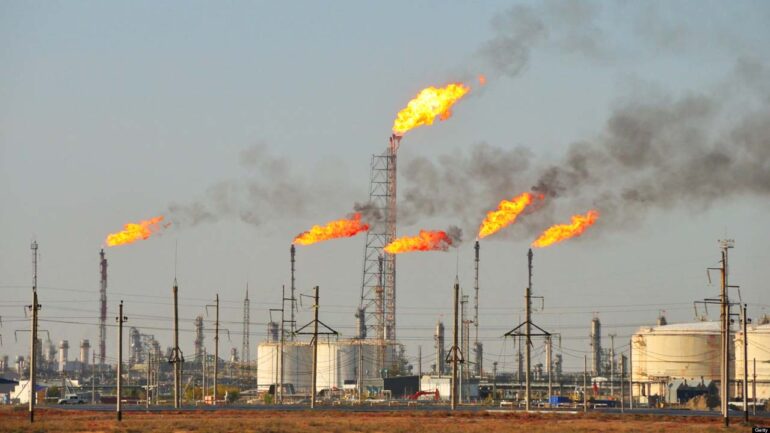Australia unveiled plans Thursday to keep burning natural gas beyond 2050, saying its reliance on the fossil fuel would not derail a pledge to reach net zero emissions in the next 30 years.
Resources minister Madeleine King said gas “will remain an important source of energy” in Australia, outraging environmental groups which branded the Future Gas Strategy a “climate disaster”.
“Gas is needed through to 2050 and beyond,” King said, arguing it would bolster the economy and stabilise the country’s electricity grid as renewables were ramped up.
Australia has pledged to reach net zero emissions by 2050, and has recently touted plans to overhaul its economy with massive investments in clean energy production.
Prime Minister Anthony Albanese defended the gas strategy, saying it would not imperil Australia’s climate commitments.
“It is consistent with the long position that we have held, my government is committed to a net-zero future,” he said.
“Gas power generation is something that firms renewables.”
But environmental groups rubbished the strategy.
Jennifer Rayner, advocacy head for the Australian non-profit Climate Council, said the government needed to choose between gas or renewable energy.
“It can’t do both,” she said.
“More gas is a bad bet, against a safe climate future and a thriving clean economy.”
Australian Conservation Foundation spokesman Gavan McFadzean said the government’s gas plan was a “climate disaster” that needed to be abandoned.
“Gas is a highly polluting fossil fuel, the burning of which is supercharging bushfires, heatwaves, coral bleaching and flooding in Australia and around the world,” he said.
“To replace one fossil fuel with another is not a clean energy transition.”
– ‘Not needed’ –
Australia will continue to ship gas overseas under the government’s strategy, which also makes the case for exploring and exploiting a series of new gas fields.
The Institute for Energy Economics and Financial Analysis cast doubt on the need for more gas.
“Our research has found that further gas exploration and development is definitely not needed,” analyst Josh Runciman said in a statement.
“Gas exploration expenditure has been falling for the past decade as gas companies pivot to renewable investments or return cash to shareholders.”
Liquid natural gas is Australia’s second-largest export by value, worth around $60 billion last year, according to government figures.
Gas accounts for almost one-third of Australia’s energy consumption, while renewables make up about 8.9 per cent.
Australia has committed to cutting carbon emissions by 43 per cent by 2030 from 2005 levels, on a path to reaching net-zero emissions by 2050.
Australia’s carbon dioxide emissions per person are among the highest in the world at 15.3 tonnes, surpassing US levels, World Bank figures show.
AFP


